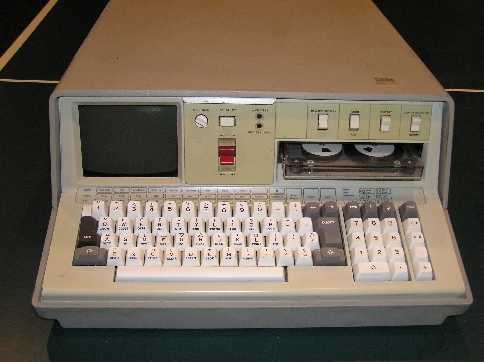





|
NAME |
5100 |
|
MANUFACTURER |
IBM |
|
TYPE |
Professional Computer |
|
ORIGIN |
USA |
|
YEAR |
September 1975 |
|
END OF PRODUCTION |
1978 |
|
BUILT IN LANGUAGE |
BASIC, APL or both |
|
CPU |
IBM Circuit module |
|
SPEED |
1.9 MHz |
|
KEYBOARD |
Full stroke 74 keys with numeric and arrow keys |
|
RAM |
16 to 64 KB |
|
ROM |
32 t 64 KB |
|
TEXT MODES |
64 char x 16 lines |
|
GRAPHIC MODES |
None |
|
Colors |
Monochrome |
|
Sound |
None |
|
SIZE/WEIGHT |
75 lbs (28 kg) |
|
I/O PORTS |
5103 printer and 5106 external tape drive unit |
|
BUILT IN MEDIA |
Built-in 204 KB DC600 tape drive |
|
OS |
APL or BASIC |
|
POWER SUPPLY |
Built-in power supply |
|
PRICE |
From $8975 (BASIC 16 KB) to $19,975 (BASIC+APL 64 KB) |
|
IBM 5100
|
|
IBM 5100 |
|
This was the first widely marketed and supported personal computer, and definitely the first useful all-in-one,
portable computer system. However, it was a very primitive machine that was largely unsuccessful due to its high
price tag (basic version costed $8,975) and limited expansion capabilities.
|
